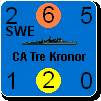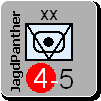wosung
Posts: 692
Joined: 7/18/2005
Status: offline

|
quote:
ORIGINAL: Froonp
quote:
ORIGINAL: Shannon V. OKeets
quote:
ORIGINAL: Neilster
quote:
The real test for inclusion of the proposed canal (whether it be shown as a canal or a river) is how much of an obstacle it was to land combat. On that topic I am also blissfully ignorant. I merely note that that crierion is probably best for making the decision.
They're generally not very wide and with a few exceptions, IMHO, they weren't much of an obstacle to attackers.
With regard to the map changes, how will Chinese warlords affect all this? I've been reading a bit about them lately and they seem to have been extremely important.
Cheers, Neilster
There is an optional rule for including Chinese Warlords - 22.4.15 in RAW - from Politics in Flames.
Yes, and I seem to remember that it was also decided in the "Play Balance in China" thread to have more of them.
For the moment, we have the following warlords :
- Chengtu
- Chungking
- Kunming (T'ang Chi-yao faction)
- Lanchow (Kuo-mingchoung faction, under Feng-Youhsiang)
- Peking (Fengtien faction, under Chang-Tso-lin)
- Shanghai (Chihli faction, under Ch'uan-fang)
Could be added :
- Nanning (Kouang-Si faction)
- Changsha or Wuhan (Chihli faction, under Wu P'ei-fu)
- a second Warlord to Peking as this one seems to have a lot of territory under his rule (in 1928)
- a second Warlord to Lanchow as this one seems to have a lot of territory under his rule (in 1928)
- a second Warlord to Shanghai as this one seems to have a lot of territory under his rule (in 1928)
The Warlords factions and names in brackets are from the John Keegan (ed.), Times Atlas of Second World War, p. 33 (French edition). Wosunk surely has english names for this as he has the same book in English.
The Warlord I suggested are from the 1928 map page 33, so I'm not sure it is still current in 1939-45.
Moreover, the Warlord rule impose them not to go farther than 2 hexes from their home city.
With the scale change, I thing this should be changed from 2 to up to 4-6 hexes.
Please let me check out the Warlors factions in WW2. Because there was a tremenduous change between Keegan 1928 and WW2:
During the 10 years in between (1927-37 = Nanking decade of Nationalist Rule) warlords were slowly but not unsucessfully incorporated or destroyed by Chiang Kaiseks then German trained and advised Central Army.
Chengtu (Sichuan Province) was quite sucessfully incorporated in the National Chinese Kuomintang (KMT =National Party) regime of Chiang Kaishek. 1937 at the beginning of the war KMT hordes came from coast and took over, made chief warlord Liu Hsiang there governor of 6th war zone. Died in 1938, sucessor became provincial governor before Chiang Kaisehk himself took over the post. bottom line: no Warlord in sichuan.
Kunming: Lung Yun in War was quite independant "King of Yunnan" province, which became hotbed of liberal intellectuals during war. Lung was tolerated by Chiang because of Lungs importance and the importance of Burma Road (chinese way of policing: if you can't destroy your enemeys: embrace them)
Kweiling, Nanning, Kweiyang (Kwangsi Province): Kwangsi warlords (Pai Ch'ung-hsi et al.) strong anti Chiang Kaishek tradition in 20s-30s, but supported war effort without equivocations. bottom line: Kwangsi warlords.
Taiyuan, Sian (Shansi province): Yen Hsi-shan veteran warlord ruled from 1911-49. Lost Taiyiuan to Japanese, lost part of his Army, which defected to Communist 8th Rout Army (they wer neighbours). Got an agreement with Japanese Aug 1941 (wepons against defection from Nationalist China) but nothing came out of it, Yen went neutral for the rest of the war. bottom line: independant warlord.
Japanese Puppet regimes:
North China:
Peiping: North China Provisional Government, established 1937, (more or less ex- Peiyang Warlords) most time Leader Wang K'o-ming, 1940 because of inauguration of Wang Ching-wei Nanking government the North China Provisional Government was degraded to Council of North China's political affairs. But else nothing changed. It remained relatively autonomuous
Central China:
Shanghai / Nanjing 1938-end 40 Reformed Governement of the Republic of China, Leader Liang Hung-chih. Regional Organization.
1940-45 "Central Government" or "National Government" (Wang Ching-wei until his assasination Nov 1944). It "controlled" the area from Sichuan border to South Kwangtung, Hainan, North Kiangsi etc. with a 600.000 men Army, mainly a barrier to CCP partisans, but no menance to National Chinese Army.
Altogether
In Japanese occupied China 1,8 Million Japanese and Puppet Troops guarding a population of 183 Mio people.
Sources:
T'ien-wei Wu Contending Political Forces during the war of resistance, inJames C. Hsiung and Steven I. Levine (ed.), China's bitter Victory: The War with Japan 1937-1945, Armonk 1992, p.51-78.
Lincoln Li, The Japanese Army in North China, 1937-1945, Tokio 1975.
Regards
P.S.: For the names of the Lakes you can omit the "Hu" (last Syslable) because it means "Lake"
|
 Printable Version
Printable Version











 .
. 



 New Messages
New Messages No New Messages
No New Messages Hot Topic w/ New Messages
Hot Topic w/ New Messages Hot Topic w/o New Messages
Hot Topic w/o New Messages Locked w/ New Messages
Locked w/ New Messages Locked w/o New Messages
Locked w/o New Messages Post New Thread
Post New Thread